#ojo the unlucky
Text

Here are my designs for the boy protagonists of Baum's Oz books.
These characters won't be in Yellow Brick Ramble as they don't show up till the later books. I just drew them for fun.
I consider Kiki Aru to be a protagonist despite being a villain because he's basically the main character of Magic of Oz.
I won't be taking notes on Ojo's character design. It's not without precedence in some of John R Neill's illustrations.
Button Bright's basically a stray cat. He has living parents, but you have to wonder what kind of parents produce a kid like Button Bright and why he had no hesitation in moving to Oz forever without them.
I decided it makes narrative sense that Woot would be green considering that Mrs. Yoop transforms him into a green animal.
Zeb is the only cis het person here.
Ojo & Button Bright are my favorites because they have the most distinctive personalities. I'm glad they're friends.
99 notes
·
View notes
Text

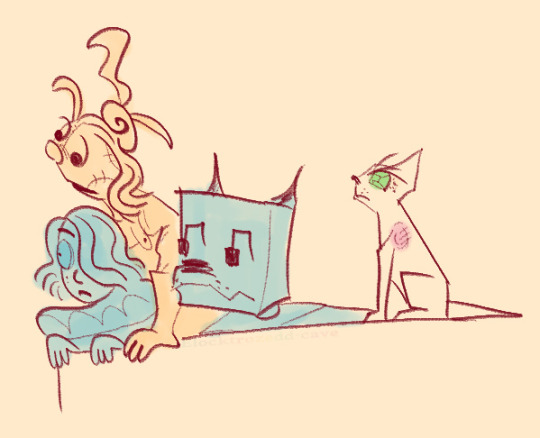

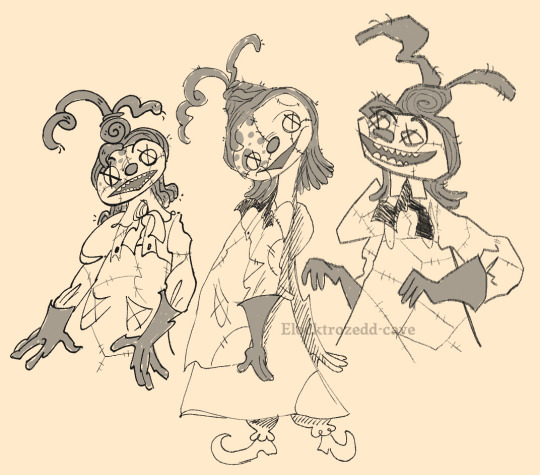
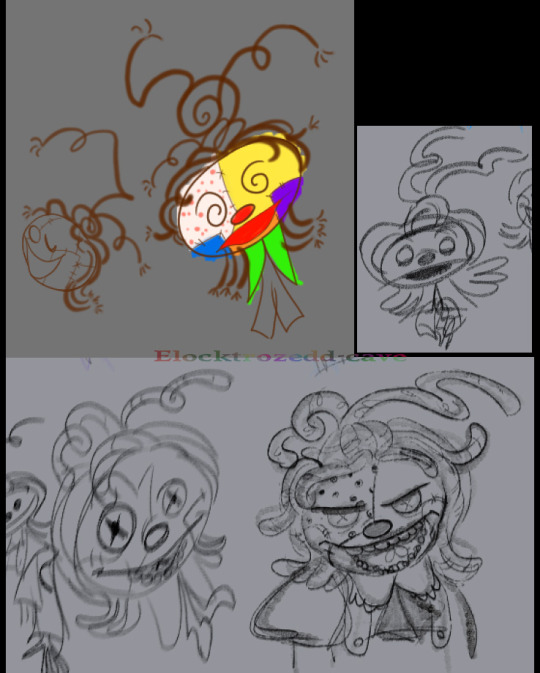
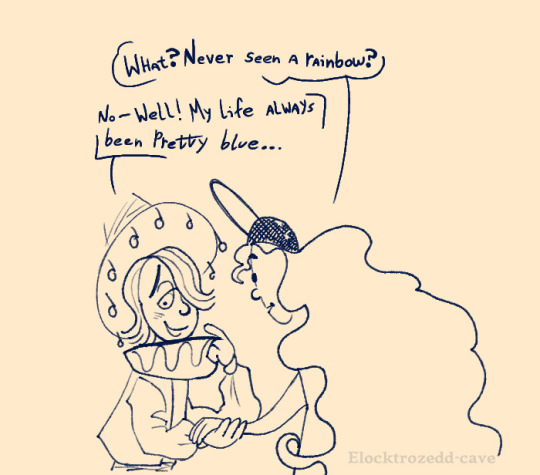
Mostly Scraps :P
#I don't really ship Ojo with Polly but I wanted to draw Ojo saying that#Ojo the unlucky#Scraps the patchwork girl#fanart#my art#digital art#doodle#oz books
12 notes
·
View notes
Text
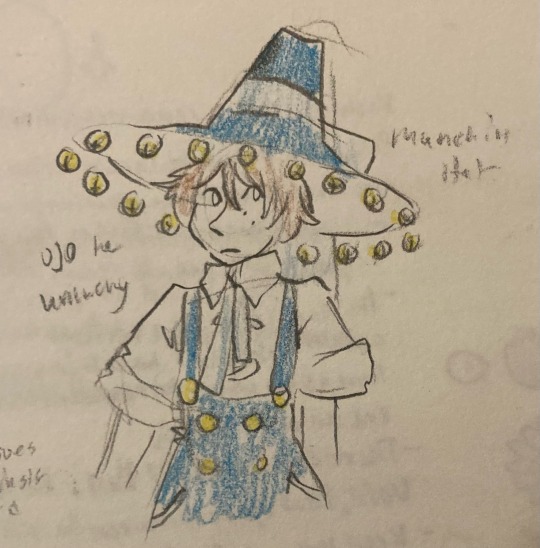
Ojo the unlucky… sort of one of my favorite characters of the patchwork girl of oz. Unfortunately I have a feeling that he only shows up in this book.
He actually had questions about what was going on in Oz.
As any self respecting munchkin he wears blue.
18 notes
·
View notes
Text
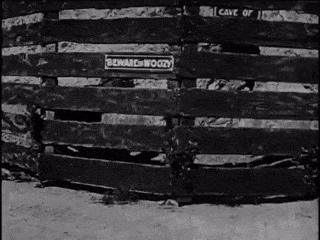
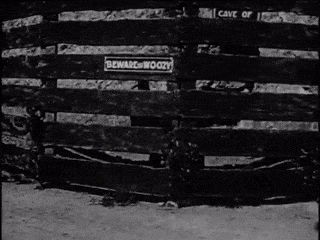
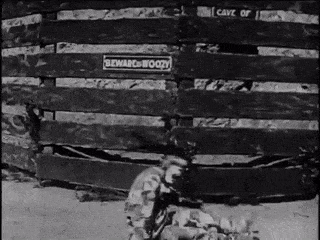

"The Patchwork Girl of Oz" (1914)
Directed by J. Ferrell MacDonald
Written by L. Frank Baum
#the patchwork girl of oz#j farrell macdonald#l frank baum#wizard of oz#scraps the patchwork girl#ojo the unlucky#woozy#early 1900s#silent film#silent film gifs#gifs#my gifs
16 notes
·
View notes
Text
Images from the Patchwork Girl of Oz! Recently scored this beauty (as well as three others) on ebay! She is my absolute favorite character in the oz series and was astounded to have this book real and in my hands.



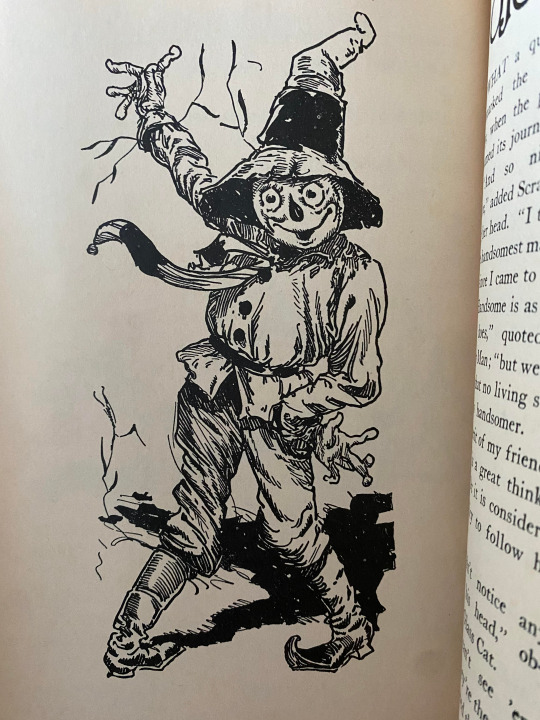

#as always if anyone would like other images ill be happy to add them!#the wizard of oz#wizard of oz#vintage wizard of oz#oz#frank baum#patchwork girl#scarecrow#scarecrowofoz#ojo the unlucky#book illustration
20 notes
·
View notes
Text
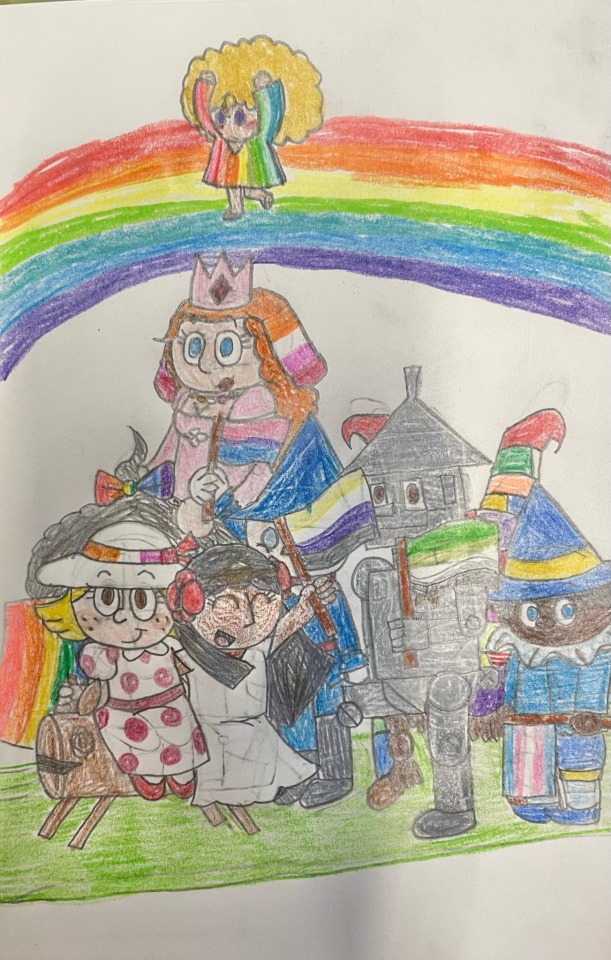
emerald city pride parade
#txt#oz#my art#oz books#the wizard of oz#dorothy gale#princess ozma#the scarecrow#nick chopper#the tin woodman#the tin man#scraps#scraps the patchwork girl#ojo#ojo the unlucky#ojo the lucky#the cowardly lion#glinda#polychrome#land of oz
20 notes
·
View notes
Photo
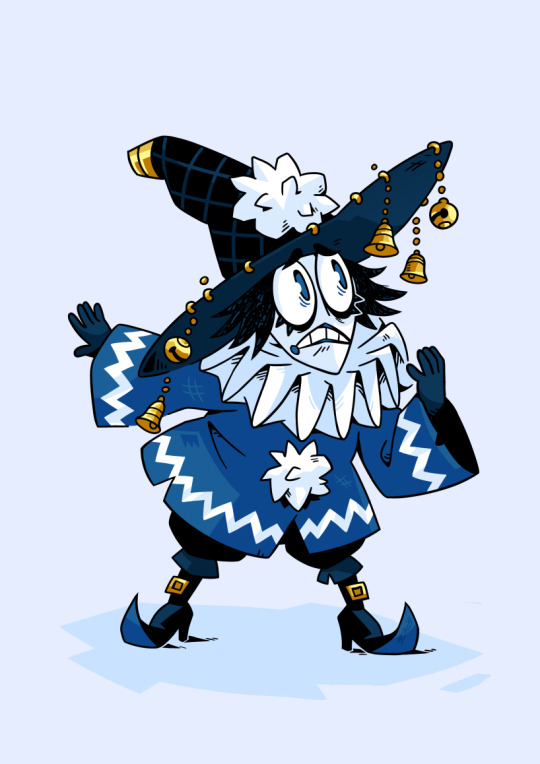
Ojo the Unlucky, a Munchkin boy off on a quest to gather up the ingredients to un-petrify his uncle. He’s a pessimistic child, bearing several un-auspicious signs. Sometimes he gives in to the cruel twists of life --what else could be expected to happen to someone who’s Unlucky--, other times he expresses frustration at people forcing their wills upon others.
He’s the main cause behind the Patchwork Girl’s extroverted personality. Originally intended to be a domestic servant by Dame Margolotte, Ojo interfered in her construction, filling her brains with extra Cleverness, Poesy, Self-Reliance... basically all the mental attributes that make for an extroverted, non-servile personality. Good for her.
99 notes
·
View notes
Text
Superstitious Leo
So one of the things that I feel like we should talk more about is Leo having a lucky rock. I feel like perhaps it's not the only superstitious things he does or has...
● Leo freaking out for a millisecond when someone at the table knocks the salt, and quickly picking a bit to throw over his shoulder
● One day he found a four leaf clover and brought it home with him, he may press it inside one of his comics to keep it safe
● I imagine that if he feels weirdly unlucky, he'd ask Señor Hueso for help (I think since he watched latino tv maybe he also watched paranormal shows and heard of the "mal de ojo"). He feels better with the red bracelet Hueso gives him to shut him up
● Donnie has tried various times to explain to him that "lucky rocks" are not "a thing", and that luck is actually just a bunch of probability and statistics in which a random object is not a variable that makes it more likely to have positive outcomes... but yeah Leo stops listening about three words in
● "You're just jealous that I'm the lucky twin, Don"
#rottmnt#rottmnt headcanons#rise leo#rise leonardo#leonardo hamato#rise hueso#rise of the teenage mutant ninja turtles#man am I rusty in this writing thing#promise I'll get better lol
101 notes
·
View notes
Text
So the following morning the party started on the journey to the Emerald City, which they reached in due time without any important adventure. It was a sad journey for Ojo, for without the wing of the yellow butterfly he saw no way to save Unc Nunkie—unless he waited six years for the Crooked Magician to make a new lot of the Powder of Life. The boy was utterly discouraged, and as he walked along he groaned aloud.
"Is anything hurting you?" inquired the Tin Woodman in a kindly tone, for the Emperor was with the party.
"I'm Ojo the Unlucky," replied the boy. "I might have known I would fail in anything I tried to do."
"Why are you Ojo the Unlucky?" asked the tin man.
"Because I was born on a Friday."
"Friday is not unlucky," declared the Emperor. "It's just one of seven days. Do you suppose all the world becomes unlucky one-seventh of the time?"
"It was the thirteenth day of the month," said Ojo.
"Thirteen! Ah, that is indeed a lucky number," replied the Tin Woodman. "All my good luck seems to happen on the thirteenth. I suppose most people never notice the good luck that comes to them with the number 13, and yet if the least bit of bad luck falls on that day, they blame it to the number, and not to the proper cause."
"Thirteen's my lucky number, too," remarked the Scarecrow.
"And mine," said Scraps. "I've just thirteen patches on my head."
"But," continued Ojo, "I'm left-handed."
"Many of our greatest men are that way," asserted the Emperor. "To be left-handed is usually to be two-handed; the right-handed people are usually one-handed."
"And I've a wart under my right arm," said Ojo.
"How lucky!" cried the Tin Woodman. "If it were on the end of your nose it might be unlucky, but under your arm it is luckily out of the way."
"For all those reasons," said the Munchkin boy, "I have been called Ojo the Unlucky."
"Then we must turn over a new leaf and call you henceforth Ojo the Lucky," declared the tin man. "Every reason you have given is absurd. But I have noticed that those who continually dread ill luck and fear it will overtake them, have no time to take advantage of any good fortune that comes their way. Make up your mind to be Ojo the Lucky."
The Patchwork Girl of Oz, L. Frank Baum
#okay round 2 with hopefully better formatting#before I forget happy birthday to my boy Ojo#all Friday the 13ths are Ojo's birthday I don't make the rules
15 notes
·
View notes
Text
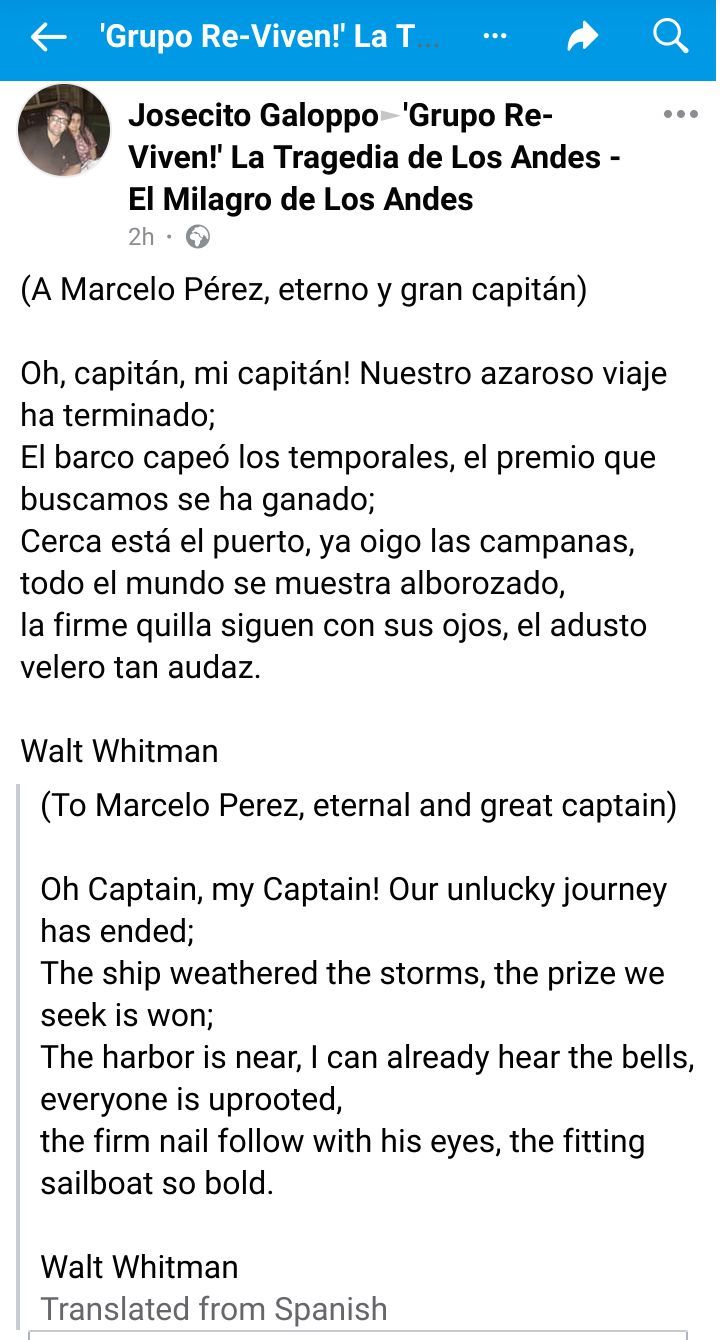
(more info on original poem here)
I've managed to lose the Facebook link so I apologize for that - two of the three photos in said Facebook post are shown below


Transcription of the poem (In Spanish and English) under the cut.
Español: (A Marcelo Pérez, eterno y gran capitán)
Oh, capitán, mi capitán! Nuestro azaroso viaje ha terminado;
El barco capeó los temporales, el premio que buscamos se ha grando;
Cerca está el puerto, ya oigo la campanas, todo el mundo se muestra alborozado, la firme quilla siguen con sus ojos, el adusto velero tan audaz.
English: To Marcelo Pérez, eternal and great captain.
Oh Captain, my Captain! Our unlucky journey has ended;
The ship weathered the storms, the prize we seek is won;
The harbor is near, I can already hear the bells, everyone is uprooted, the firm nail follow with his eyes, the fitting sailboat so bold.
Walt Whitman.
(Note, the transcription above is auto translated, see below for the poem)

Poem Reads:
O Captain! My Captain! By Walt Whitman
O Captain! my Captain! our fearful trip is done,
The ship has weather’d every rack, the prize we sought is won,
The port is near, the bells I hear, the people all exulting,
While follow eyes the steady keel, the vessel grim and daring;
But O heart! heart! heart!
O the bleeding drops of red,
Where on the deck my Captain lies,
Fallen cold and dead.
#CHRIST.JPEG#gnawing my arm off#flight 571#art#uruguayan history#Marcelo Pérez#la sociedad de la nieve
5 notes
·
View notes
Text
The Patchwork Girl Of Oz: Patching Together A Story
(Continued from my previous post in this series, and each of the ones before that. I meant to link all five in these parentheses, but Tumblr is weird and doesn't seem to want me to? Too bad, here is the one about Ozma of Oz and here is The Marvelous Land of Oz.)
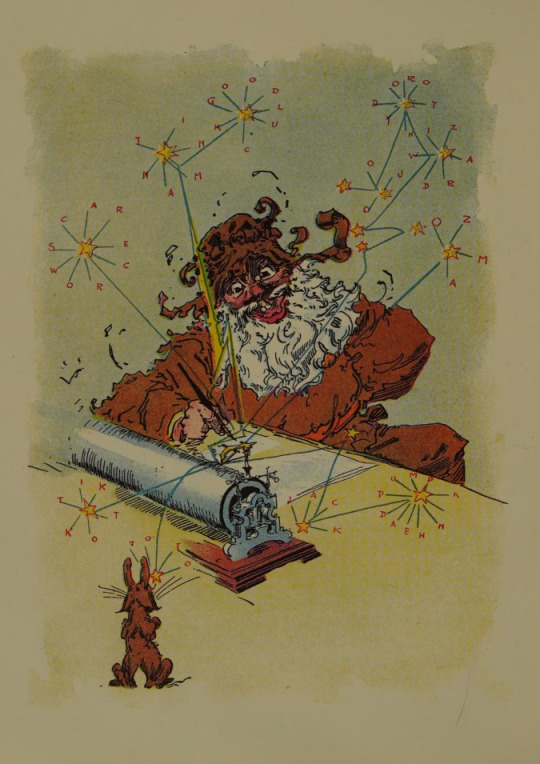
Above: The Shaggy Man using a telegraph.
In The Emerald City of Oz, Oz was hermetically sealed. However, L. Frank Baum, continuing to be a character in the fiction, is able to continue his role as Royal Historian by corresponding with the Shaggy Man via wireless telegraph. From Ozma of Oz onward, Baum depicts Oz as a utopia, not a land for perilous adventures but where the adventures end. However, the action can no longer leave the bounds of Oz. Continuing the series meant finding more peril and conflict in Oz itself. So, in 1913, the fan-favorite The Patchwork Girl of Oz began a new phase of the series in which Baum reveals that huge swaths of Oz consist of wilderness and areas beyond Emerald City control, still with beasts, individuals, and whole nations (e.g. the Hammer-Heads, the Utensians, and Jinxland) that do not know about or refuse to acknowledge Ozma’s rule. Even the Kalidahs, which Baum insisted had been tamed in The Emerald City, are apparently still wild. (“Hammerhead” is now spelled without a hyphen, one of Baum’s favorite types of inconsistencies.)
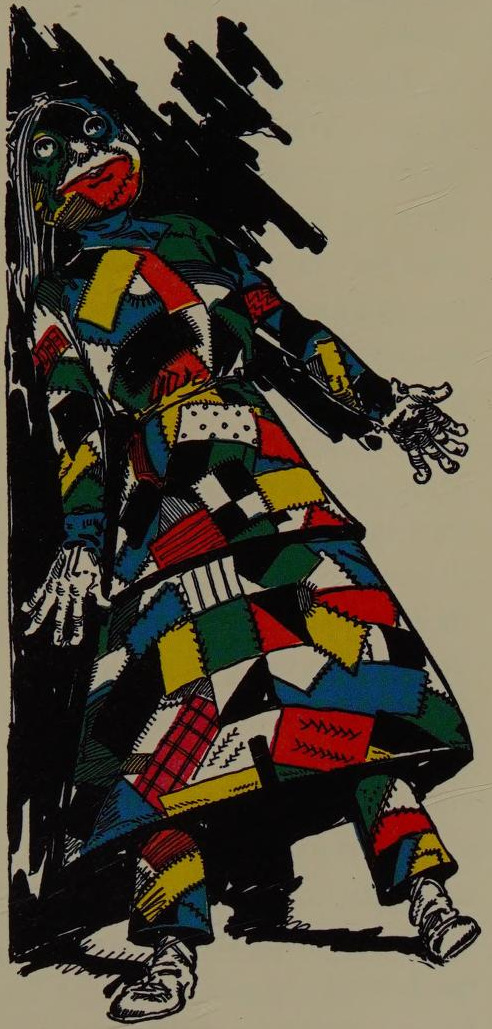
This resembles Dorothy’s journey in The Wonderful Wizard of Oz. The Emerald City greets her merrily, but the repeated warnings that Ojo will be arrested in the Emerald City prove true: he and his friends are engaged in illegal activities. During a series of chapters showing the Ozite penal system (prisoners are marched through the streets under sheets to hide their shame), Ozma seems to be the villain, or at least something less than universally good. Then Ojo realizes Ozma is kind and loving after all, phew. After Ozma releases Ojo, her one and only prisoner, from jail, she allows him, Scraps, Dorothy, and the Scarecrow to journey into the “wild country” of the Quadlings to seek out the remaining potion ingredients.
The story is to some extent a parody of the original novel: misfit friends follow the Yellow Brick Road from Munchkin Country to the Emerald City and from there travel south to Quadling Country. However, instead of grand, world-changing adventures and emotional bonding, this time the characters are often nasty to each other and to the people they meet. They learn nothing while doing nothing that affects anything. The Hopper and the Horner war episode is silly comedy, more like make-believe than war, with none of the weighty dread or substantial changes that result from the Wicked Witch of the West and the Wizard plots. Finally, the characters completely fail to achieve their goals. Then, instead of, as in the original novel, the Wizard using fake magic to pretend to resolve the issues the misfits already internally resolved, the Wizard uses real magic to resolve their real problems in an abrupt deus ex machina.
Baum was also involved in creating the 1914 movie adaptation of The Patchwork Girl of Oz (which takes out none of the racism), but I leave it to someone else to describe that financial failure. I just want to clarify that it exists and does not quite follow the plot of the novel. With that acknowledged…
Ojo Begins

In addition to Oz now having imperfections, there is another break in the series pattern. Instead of Dorothy Gale, the main character is—not the Patchwork Girl but rather Ojo the Unlucky, a Munchkin boy with a huge ruffled collar. He lives in an isolated house in the wilderness of Munchkin Country with his white-bearded uncle Nunkie, apparently just north of the mountain of the Hammerheads in Quadling Country. Unc Nunkie is a taciturn man, usually responding to any subject with a one-word answer if he must speak, for which reason he is known as the Silent One.
In The Road to Oz and The Emerald City of Oz, Baum claims there are no poor people in his fairy land utopia. This time around, though, the novel opens with Ojo and Unc Nunkie out of food and wondering why they are so poor. The answer preserves Ozma’s benevolence: their extreme isolation. “There is plenty for everyone, you know; only if it isn’t just where you happen to be, you must go where it is” (20). Poor people as protagonists? Yes, but never fear, Baum has not lost his fixation on bloodlines. Before his self-imposed exile, Unc Nunkie “might have been King of the Munchkins, had not his people united with all the other countries of Oz in acknowledging Ozma as their sole ruler” (50).
So they are poor, yes, but they are still royalty. It feels like if Baum cared to revise his texts, he would have made Dorothy a relative of the Tudors. There is no reason for this detail, either, as it never comes up again and is of no relevance to the story. It is also strange because, in earlier novels, each of the four countries of Oz has its own ruler who simply ranks lower than Ozma. This is still the case in The Patchwork Girl itself, where the Tin Woodman remains the Emperor of the Winkies. Moreover, “the Monarch of the Munchkins” attends Ozma’s birthday party in The Road to Oz. Fan fiction brain might imagine that Unc Nunkie was opposed to unification and got deposed as a result, replaced with this unidentified monarch.
Desperate for food, these two isolated weirdos walk through the wilderness to the house of another weirdo, Dr. Pipt, the “crooked magician” who lives with his wife, Margolotte. Ozma has banned the practice of magic, excepting Glinda and the Wizard (230), so even the Good Witch of the North gets screwed over. The truth is that this character has just stopped existing because Baum forgot about her.

Above: Margolotte carrying the Patchwork Girl.
Weirdly, Dr. Pipt, a wizard, can’t help but praise Ozma for banning magic: “Too many people were working magic in the Land of Oz, and so our lovely Princess Ozma put a stop to it. I think she was quite right. There were several wicked Witches who caused a lot of trouble” (42). Magic has to be illegal or the status quo might be challenged again, and nothing is more precious than the status quo. Because there are no police in Oz to search for Dr. Pipt, he has continued his illegal practices and insists he has a right to create artificial beings if he wants to, just that he cannot legally do magic for other people. Ojo and Unc Nunkie happen to find Dr. Pipt finishing up a batch of the Powder of Life to animate a human-sized, colorful patchwork ragdoll to become Margolotte’s slave. This is not me applying edgier language—Margolotte calls the Patchwork Girl her slave.
These sleazy marginalized wack jobs, including a surly Glass Cat Dr. Pipt earlier brought to life “because the meat cats drink too much milk” (208), prepare to awaken the Patchwork Girl. However, Ojo thinks it “both unfair and unkind” to limit her psychological functions so that she can be only an automaton. He discreetly “[takes] down every bottle [of personality] on the shelf and pour[s] some of the contents in Margolotte’s dish [of liquid brains]” (40).
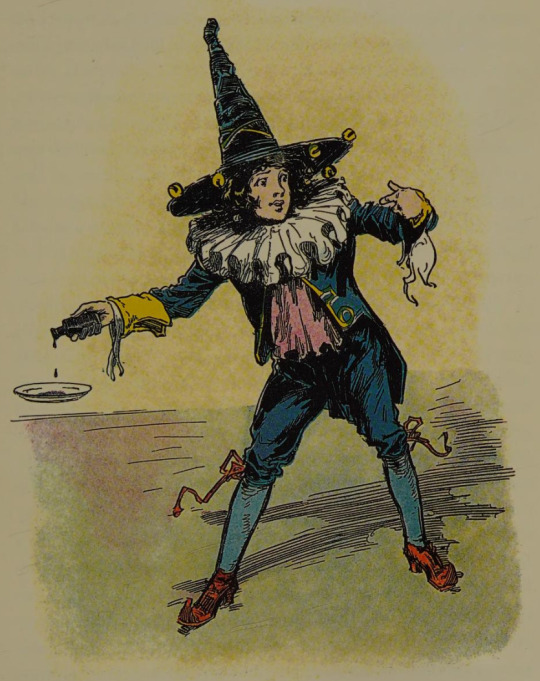
As a result, when the Patchwork Girl springs to life, she is raucous, creative, intelligent, defiant, and overflowing with chaotic energy. In her first moments, she causes Unc Nunkie to accidentally tip Dr. Pipt’s bottle of Liquid of Petrification, which spills on Unc Nunkie and Margolotte, turning them to stone. Recall that Mombi threatened to work this kind of magic six books ago (though I took it as trying to scare Tip rather than as a sincere intention, a degree of subtlety I no longer think Baum capable of).
Ojo pushed the Patchwork Girl away and ran to Unc Nunkie, filled with a terrible fear for the only friend and protector he had ever known. When he grasped Unc’s hand it was cold and hard. Even the long gray beard was solid marble. The Crooked Magician was dancing around the room in a frenzy of despair, calling upon his wife to forgive him, to speak to him, to come to life again! (56)
The Patchwork Girl rejects the name “Angeline” that Margolotte intended, instead deeming herself “Scraps” (queer allegory). In her joy to be conscious and queer, Scraps isn’t much concerned with what has happened and, displaying her good brains already, suggests Dr. Pipt just use the Powder of Life to reanimate the petrified people. Creating more powder will require “six long, weary years if stirring four kettles with both feet and both hands” (60). However, there is another compound that could break the petrification spell. Unfortunately, this potion requires a six-leaved clover, the left wing of a yellow butterfly, “a gill of water from a dark well” that light has never touched, three hairs from the tip of a Woozy’s tail, and a drop of oil from a live man’s body. Dr. Pipt does not know what the last three ingredients of this list even are.
Ojo sets out to explore Oz for the first time to find every item in the recipe. Scraps joins him. When Dr. Pipt insists she stay as his servant, the cloth homunculus claims she is serving him by helping break the petrification magic. The Glass Cat also tags along, claiming she is intelligent enough to help but really just hating life with Dr. Pipt and hoping to learn more about the world. So begins the adventure with these argumentative oddballs to whom the Land of Oz is scarcely less new than it was to Dorothy in The Wonderful Wizard. They set off down the Yellow Brick road to find the six-leaved clover outside the Emerald City, though they will not be welcome because Ozma has banned the picking of such clover. We have a proper quest with clear, specific goals and emotional stakes for the characters! Incredible! I thought Baum had forgot narrative structure exists after Ozma of Oz.
Messy, strange, evocative, and moving, these first five chapters alone contain more personality and drama than the whole of the previous two books. Sadly, despite initial promise, The Patchwork Girl fails to deliver on most of its thematic and narrative threads. I do not blame people who like this novel, as it is so much more entertaining compared to The Road to Oz and The Emerald City of Oz that a reader who has torn through each, one after another, would find The Patchwork Girl water in a desert. The book also introduces, well, the Patchwork Girl, one of the more likable characters.

How Is John R. Neill Doing?
John R. Neill’s full-color pages are printed on the same quality and the same pages as the rest of the text, an organic means of incorporating the drawings that has been missing since Ozma of Oz.
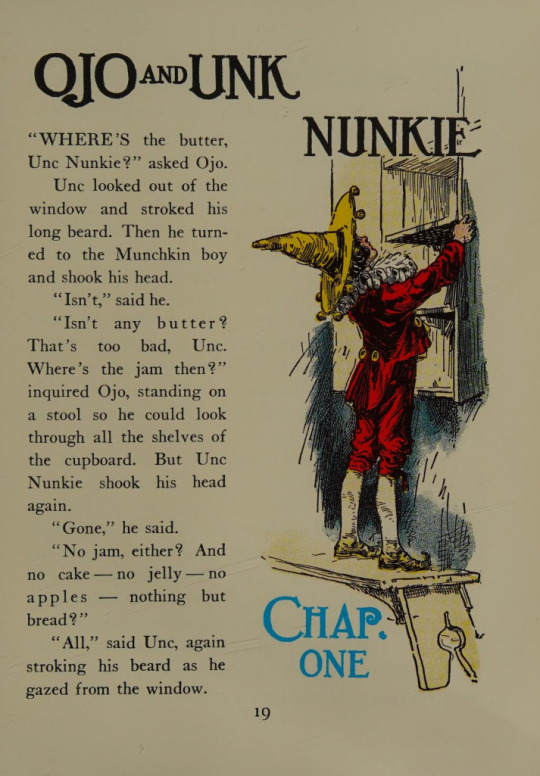
However, for the first time, there is no unique quality or distinguishing gimmick of the artwork, another way in which The Patchwork Girl initiates a new phase of the series. The quality of the illustrations is lower than usual.
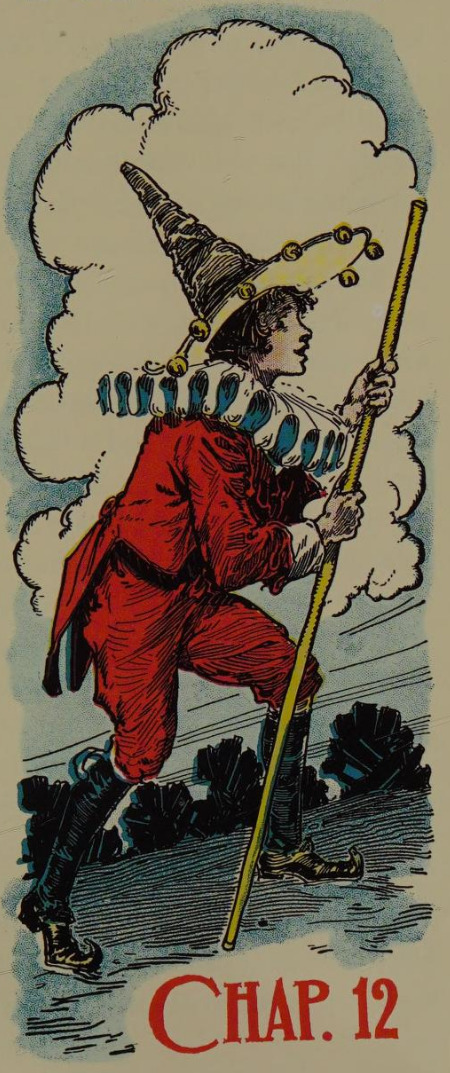
The colors are often odd. The text repeatedly notes that, as a Munchkin, Ojo dresses in blue and even dislikes other colors, yet the colorist (I assume Neill) likes depicting Ojo dressed in red. But it’s inconsistent! Sometimes Ojo is red, and other times he is blue. Baum is also specific about the colors of Scraps’s face, text ignored in the illustrations. However, this might be attributable to the book originally being printed without color, as the earlier editions seem to lack it.

Another confusing illustration error is Dorothy’s inclusion with Ojo’s party in the title illustration of Chapter 13 (above), when Dorothy never appears until Chapter 16. Not necessarily a mistake, Neill also draws Dorothy much tinier than in previous books. She is sometimes shorter than Ojo and not much larger than Toto, looking like a toddler, as below.
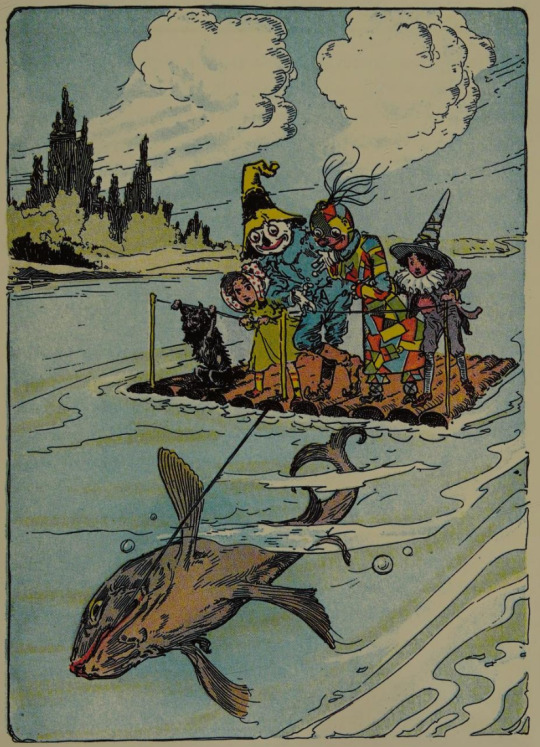
But at other junctures, Neill draws Dorothy the same height that he has previously:

Beginning in The Patchwork Girl, the Scarecrow’s face is drawn white, with red marks around his eyes and mouth. The clown makeup look isn’t necessarily a continuity error. When he first appears in The Patchwork Girl, the Scarecrow is traveling to visit, of all people, his “old friend” Jinjur to touch up his face paint (as in, his face is literally paint). She only tried to kill him once, so I understand why they get along now. For the Chapter 17 title illustration, Jinjur appears, in full Army of Revolt regalia, painting the Scarecrow’s face. Sure enough, in this and only this drawing, the Scarecrow’s head has its former brown hue. Even though Jinjur’s uniform is colored incorrectly. So she must have painted his head white and added the red markings around his eyes and mouth.
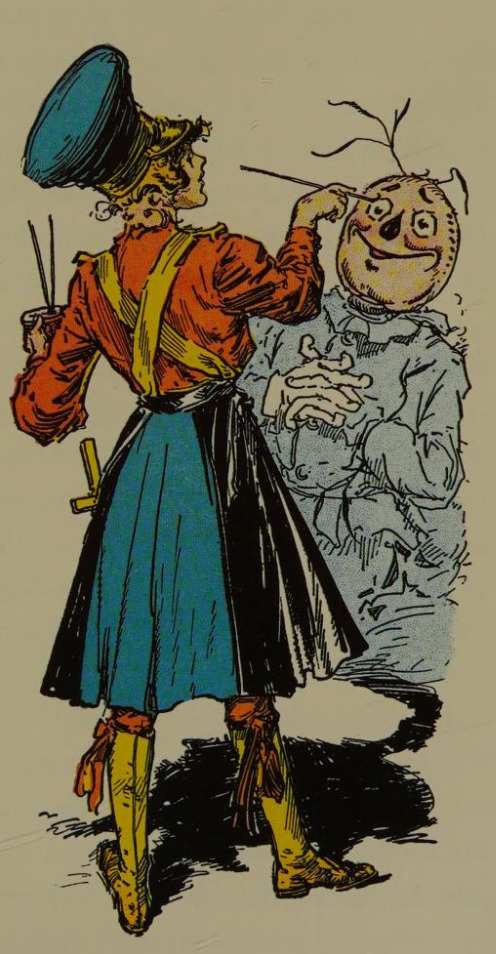
Neill continues adding unique flourishes to the illustrations, such as giving the Horners horrifying, uneven chalk-like teeth or having Jack Pumpkinhead smoke a pipe. As ever, the drawings are as pivotal to bringing life to the fantasy as is Baum’s prose (and poems, this time around). I prefer these to the messy illustrations in The Emerald City.
The Players

In addition to plots, Baum seems to have remembered strong characterization, which in The Emerald City he reserved only for villains. Scraps is an abrasive clown. In a good way! Prone to singing, Scraps initially draws the ire of other characters. As though setting up a horror plot, a woodman darkly tells Scraps, “You’re crazy, girl. Better crawl into a rag-bag and hide there; or give yourself to some little girl to play with. Those who travel are likely to meet trouble; that’s why I stay at home” (77). Oz, it seems, is still so dangerous that people prefer never to travel. But the woodman does not hate Scraps, remarking, “A Glass Cat is a useless sort of thing, but a Patchwork Girl is really useful. She makes me laugh, and laughter is the best thing in life” (75).
After gaining consciousness, Scraps immediately deems herself “the supreme freak.” She then adds, “But I’m glad—I’m awfully glad!—that I’m just what I am, and nothing else” (57). (Again, queer allegory. The character is literally rainbow already.) Scraps totally defies her intended fate as a domestic slave. As she learns more, she rejects ordinary forms of respectability and even opposes Ozma (who is now the leading wet blanket aside from Glinda).
“I hate dignity,” cried Scraps, kicking a pebble high in the air and then trying to catch it as it fell. “Half the fools and all the wise folks are dignified, and I’m neither one nor the other” (132).
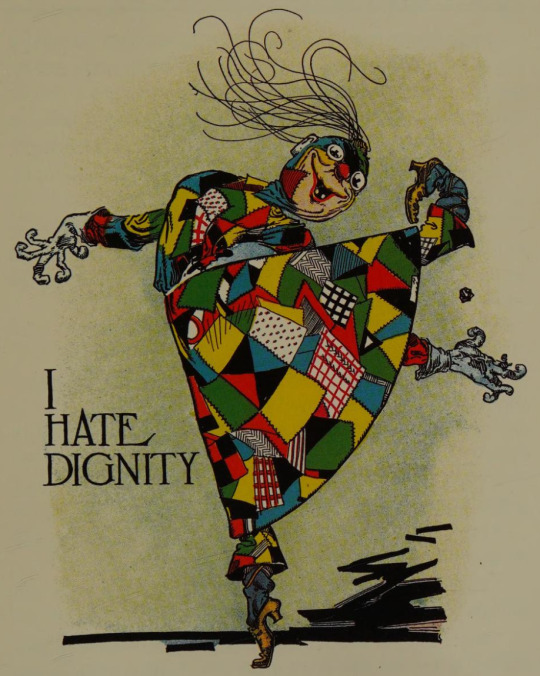
Scraps witnesses repressed Horner girls. They live submissive existences waiting for marriage, forbidden from cracking jokes, as per “the rules and regulations laid down by a leading bachelor” (290). Seeing these girls, her opposites, Scraps exclaims, “That old bachelor who made the rules ought to be skinned alive!” Feminist Scraps?
Not only joyous and selfish, Scraps is clever, observant, and shows great regard for Ojo. At one point, the characters encounter Chiss, a giant porcupine who kills travelers by launching quills as projectiles. When Chiss prepares to attack Ojo, Scraps “realize[s] in an instant” what is happening, “so she sprang in front of Ojo and shielded him from the darts, which stuck their points into her own body until she resembled one of those targets they shoot arrows at in archery games” (155). Scraps also dares conceal incriminating evidence and claim Ojo is innocent when Ozma puts him on trial. Sadly, the Wizard blows Scraps’s deception. But the effort demonstrates, yet again, that the Patchwork Girl is fearless. And brighter than the Scarecrow!
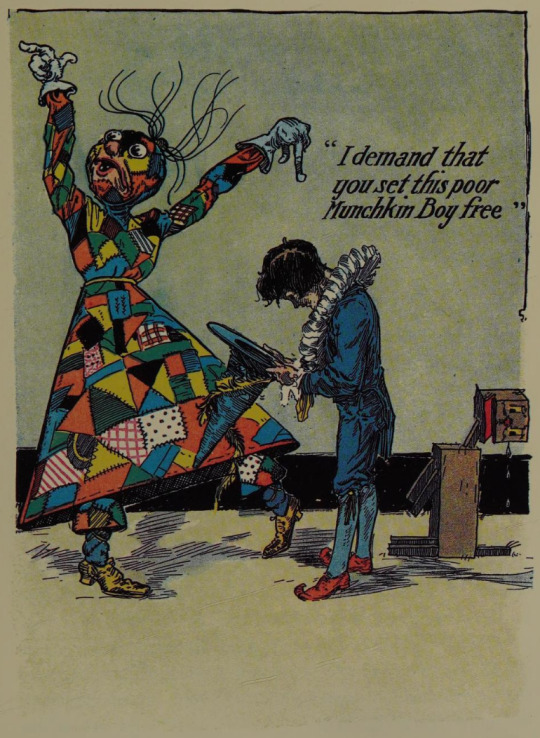
Despite how she protects him, Ojo also remains really mean about Scraps to the end. When Dorothy, for instance, asks Scraps if she is “feeling a little queer,” Ojo answers for her: “Not queer, but crazy[. …] When she says those things [i.e. sings] I’m sure her brains get mixed somehow and work the wrong way” (157).
Baum is in a poetical mood. Scraps frequently recites songs or poems, including her first words upon seeing her reflection and understanding herself:
“Whee, but there’s a gaudy dame!
Makes a paint-box blush with shame.
Razzle-dazzle, fizzle-fazzle!
Howdy-do, Miss What’s-your-name?” (56)
I didn’t say it was inspired poetry. Scraps is in love with her colorful appearance. Most of the other characters dismiss her as ugly and crazy. The foolish owl puts it best in, ironically, a song:
“Patchwork Girl has come to life;
No one’s sweetheart, no one’s wife;
Lacking sense and loving fun,
She’ll be snubbed by everyone” (93).
Only when Dorothy, Ozma, and most especially the Scarecrow meet Scraps does she receive respect. The Scarecrow deems her the most beautiful sight his eyes have ever beheld, and Scraps shows the Scarecrow rare deference, attempting to be slightly more respectable even though first she has Ojo roll her on the ground to reach her full height (169). The Scarecrow and Scraps don’t become an item, though, at least not in this book. (After all, the Scarecrow is spoken for by his boyfriend, Nick Chopper.) Their faux courtship is probably meant as a joke, much like the physical abuse the Scarecrow faces throughout the novel. Scraps remains no one’s sweetheart, no one’s wife, and maybe she’s happier that way. I guess she is “feeling a little queer,” like Dorothy observed.

The Glass Cat, a foil and semi-sister to Scraps, also has strong characterization. Like Scraps, she rejects the name her oppressive parents gave her, “Bungle,” and refuses her intended role as a housecat, wanting instead to be an admired person. The Glass Cat is indolent, selfish, and vain, having no respect or patience for someone loud and strange like Scraps. The first words she tells Scraps are that the latter is horrid. The Glass Cat is visually her opposite: Scraps’s body is made from a durable rainbow patchwork quilt, whereas the Glass Cat is made of delicate glass and is transparent, colorless. “I am much more beautiful than the Patchwork Girl,” the Glass Cat gloats to the Scarecrow. “I’m transparent, and Scraps isn’t; I’ve pink brains—you can see ’em work; and I’ve a ruby heart, finely polished, while Scraps hasn’t any heart at all” (172).
The Glass Cat’s most defining source of vanity her is “pink brains” (you can see ’em work). These seem to be a small pocket of fluid of the kind inside Scraps rather than organic brains, and Neill draws them as little marbles. While Scraps is also highly proud of herself, she does not dismiss others as lessers, demonstrating a healthier self-attitude than the Glass Cat manages.
The Glass Cat is haunted by the Shaggy Man’s advice that, if she doesn’t want people to break her, she should “purr soft and look humble—if you can” (145). In other words, she is told she should accept the limiting role society tells she should. While the story implicitly rejects this moral for Scraps, also honoring her chosen identity by never calling her Angeline in the narration, Baum believes the Glass Cat should change her attitude and does sometimes call her Bungle. The ominous and rather sexist dismissal of her feelings leads to a distressing ending, which I’ll return to later.
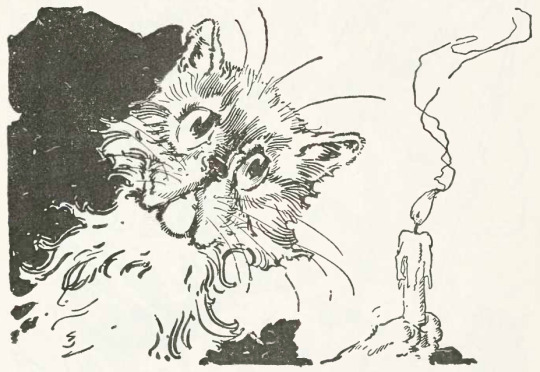
The Woozy whose three hairs Ojo needs for the potion is no less memorable. The only Woozy on Earth turns out to be a boxy animal that can shoot fire from its eyes. Local beekeepers, failing to kill this bee-devouring creature because of its impervious skin, imprisoned the Woozy without food for years, but even starvation never killed it (104). Though stubborn, the Woozy is friendly and “lonesome—dreadfully lonesome” (103). Initially hating to part with its only three hairs, the Woozy acquiesces when it realizes the hairs might be life-saving. When Ojo and Scraps lack the physical strength to tear the three hairs out, the Woozy, wishing to have company anyway, agrees to join them until they meet someone who can.

A belief that its growl is almost supernaturally terrifying is one of the Woozy’s memorable traits. After much buildup, the actual growl turns out to be “Quee-ee-ee-eek” (152). Carrying on the pattern of oddballs who prove adequate in their inadequacy, the Woozy concludes, “It has always sounded very fearful to me, but that may have been because it was so close to my ears” (154). Ojo, however, reassures it that “it is a great talent” to be able to shoot fire from one’s eyes.
The argumentative nature of this group adds texture and tension missing from the last two depictions of Oz. This might stem from these characters being outcasts on the road instead of magical royalty relaxing in luxurious castles. Their contrasting personalities also permit the comedic repartee from The Marvelous Land of Oz to return:
“All right; I promise,” said the Woozy, cheerfully. “And when I promise anything you can depend on it, ’cause I’m square.”
“I don’t see what difference that makes,” observed the Patchwork Girl, as they found the path and continued their journey. “The shape doesn’t make a thing honest, does it?”
“Of course it does,” returned the Woozy, very decidedly. “No one could trust that Crooked Magician, for instance, just because he is crooked; but a square Woozy couldn’t do anything crooked if he wanted to.”
“I am neither square nor crooked,” said Scraps, looking down at her plump body. [Note that this is another instance of Scraps being neither in one category nor the other. She doesn’t quite fit in any expected roles.]
“No; you’re round, so you’re liable to do anything,” asserted the Woozy. “Do not blame me, Miss Gorgeous, if I regard you with suspicion. Many a satin ribbon has a cotton back.”
Scraps didn’t understand this, but she had an uneasy misgiving that she had a cotton back herself (112–113).
This emphasis on comedic dialogue might suggest Baum wanted this to be a stage play too, though the adaptation turned out to be a movie.
The Second Half

The second half of the novel, the journey from the Emerald City south to the dangerous Quadling Country, features plenty of new ideas and settings. The new protagonist party of Ojo, Scraps, Dorothy, and the Scarecrow (I guess Toto is around too) never achieve the chemistry or dramatic promise of the initial grouping. Dorothy has no further character elements to develop and is too well-established to change. So is the Scarecrow, who has completed whatever arc he had six whole novels ago by believing himself brainy and then stepping down as king. Baum has him tag along only to be the victim of repeated slapstick violence. There is a frightening encounter with the giant Yoop (whose wife is an important character in The Tin Woodman of Oz) and a surprisingly grounded sojourn with a Quadling couple. Otherwise, the tone loses the edge and the drama to become predominately silly comedy.
An unfortunate addition to Quadling Country are the Tottenhots, childlike people who inhabit black dome-shaped houses. Their name is derived from an offensive term for the Khoekhoe people. Baum describes them in stereotypical “native” dress, calls them “dusky” (244) and “little brown folks” (246), and portrays them as childish and work-hating in a way derived from racist stereotypes of Black Americans. While hardly a shock for 1913, when popular American media took mocking Black people for granted, this is definitely one of the uglier moments in Baum’s canonical Oz novels. (My William Morrow and Company Books of Wonder edition preserves the Tottenhot sequence. But earlier, some editor rewrote the minstrel show-influenced lyrics of a song called “My Lulu” to no longer call someone “coal-black,” so I wonder what the rationale was.)
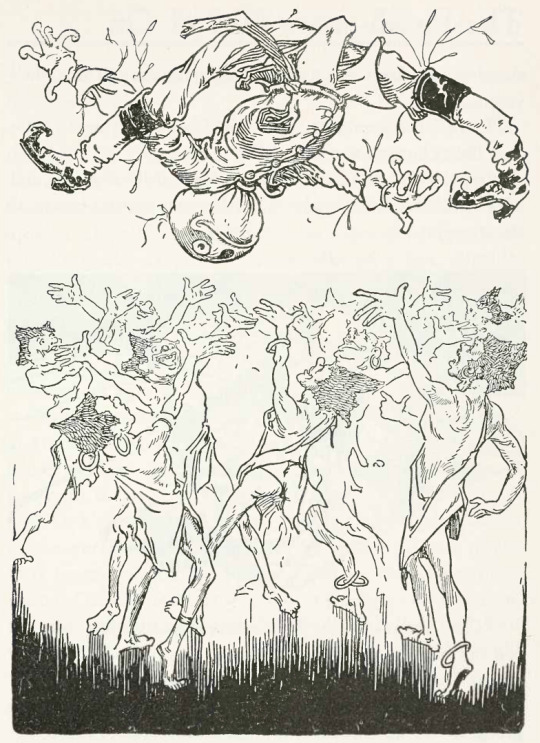
Above: These, er, problematic Tottenhots playing with the Scarecrow.
Later, Ojo and his companions discover two cave-dwelling countries inside a mountain. This seems like a promising place in their hunt for the dark well. The first of these peoples, the Hoppers, have a single leg each and hop around like pogo sticks. “Walk! Who wants to walk?” says Hip Hopper, first Hopper we meet. “Walking is a terribly awkward way to travel. I hop, and so do all my people. It’s so much more graceful and agreeable than walking” (274). The second group, the Horners, each have a single horn in the center of their forehead. The Hoppers are at war with the Horners—a war in which nobody is hurt or dies—because they misunderstood a cornball pun. Dorothy willingly participates to achieve her goals, pretending to take Hip Hopper prisoner.

A few chapters of comedy hijinx resolve the conflict, but what is more likely to alarm a modern reader is that the underground city of the Horners glows. Why? Because they coat the interiors of all their buildings with radium! The city is so radioactive it glows brightly! Dorothy has a few more days to live, tops. “They found themselves in a vast cave which was dimly lighted by the tiny grains of radium that lay scattered among the loose rocks” (300). OH NO. No wonder this ends my Oz reading series: the remainder of the novels concern Dorothy, Ojo, and Toto dying of radiation burns. Well, I’m sure brightly glowing radioactive material is good for you since the Chief Horner tells Scraps that it is medicine (288). Perhaps the Horners are sustaining brain damage that causes them to enjoy bad puns as much as they do (this is coming from me, a pun enthusiast).
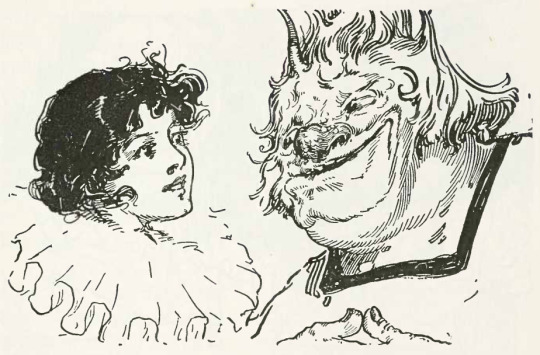
It is all for naught. The Tin Woodman refuses to allow Ojo to tear a wing off a yellow butterfly and thereby attain the final ingredient. (The yellow butterflies all live in the yellow Winkie Country and hence are under the Tin Woodman’s protection.) Ojo and Scraps are shocked and outraged, much as they were when they learned Ozma forbade the picking of six-leaved clovers. “I want to help Ojo, who is my friend,” declares Scraps, “to rescue the uncle whom he loves, and I’d kill a dozen useless butterflies to enable him to do that” (327). When the crying child (!) tells him that without killing a single butterfly he cannot save his uncle, the Tin Woodman even says to the mourning orphan child (!), “firmly” no less, “Then he must remain a marble statue forever” (328). Yeah, that legendary compassion on display. Some heart. /s
I don’t necessarily object to the principle that hurting a living creature is always wrong, but the Tin Woodman apparently values a single insect over the lives of two humans. Where is that compassion when the Tin Woodman kills the Kalidahs or butchers a cat to save a mouse or kills forty wolves in The Wonderful Wizard of Oz? Or when he attacks a bunch of jackdaws in The Marvelous Land of Oz?
“I’m Ojo the Unlucky,” says Ojo, despairing (329). When he describes the various circumstances that prove he is unlucky, the Tin Woodman ripostes that they are all lucky. His final advice to Ojo is to be Ojo the Lucky instead, treating this as an internal psychological state rather than an external metaphysical one.
The Disturbing Anticlimax
Upon their return to the Emerald City comes a bizarre ending. Ozma informs Ojo that she has apprehended Dr. Pipt, destroyed all his magical equipment, and burned his spell book (332). Glinda, who now apparently is aware of people’s predetermined fates, knew all about his journey and that he would fail. Glinda herself does not turn up to resolve the story this time around, however, but has her minion, the Wizard, act in her stead. The final chapter, entitled “The Wonderful Wizard of Oz” in an ironic reflection of the original novel, has the Wizard wrap up the characters’ issues with genuine magic as I mentioned above.
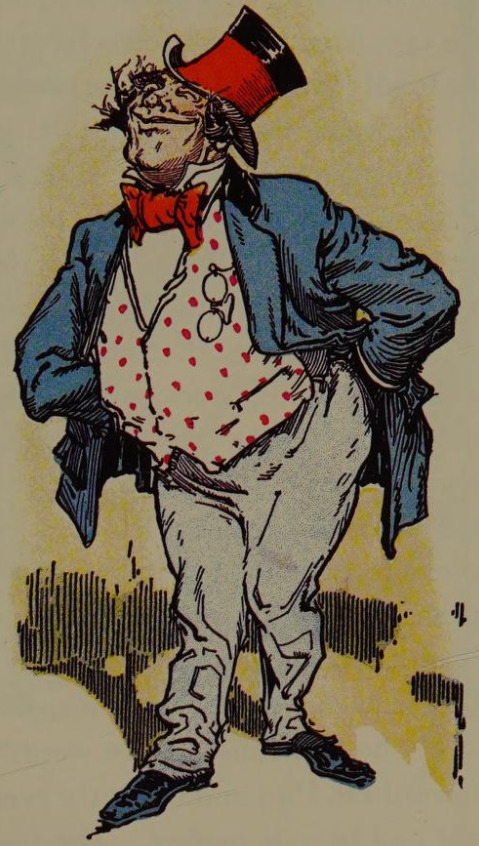
Above: the Wizard has put on a lot of weight.
The Wizard greets Ojo in a room with Dr. Pipt and the petrified Margolotte and Unc Nunkie. Next the Wizard magically straightens out the literally crooked Dr. Pipt, announces the Woozy can live in the Royal Menagerie, and says that Ozma respects Scraps enough that she may live wherever she pleases “and be nobody’s servant but her own” (338). Reciting a magic word he learned from Glinda restores Margolotte and Unc Nunkie to life. Ojo weeps from joy, embracing his uncle, and when the Tin Woodman reminds him he is in fact Ojo the Lucky, Ojo responds, “Yes; and it is true!” With this, the book ends except for, in my Books of Wonder edition, Peter Glassman’s afterword.
The whole journey was completely pointless, with the Wizard resolving every conflict completely independent from the main characters. This is another disappointing ending, in part because it makes little sense: why didn’t Glinda intervene immediately and spare everyone this trouble? The subversion is so complete, however, that it feels deliberate.
You might object that Dorothy’s journey in The Wonderful Wizard of Oz is similarly pointless despite my more positive judgment of that book. This misses that, although the Wizard is a fraud in the scene The Patchwork Girl ending parodies, the characters in The Wonderful Wizard genuinely achieve things. They radically change the Land of Oz, and when the Wizard gives the Scarecrow “brains,” the Tin Woodman a “heart,” and the Cowardly Lion “courage,” he is not actually giving them any character growth or attributes. Their actions have already demonstrated they possess these qualities. They have learned and grown. Rather than the end of their journey, this is also just another episode of it, with a third of the book and more adventures to go before Dorothy achieves her goal of returning to Kansas.
In contrast, does Ojo even learn anything? His issue, being unlucky, is not a personality trait, as the original novel’s wisdom, compassion, and courage are, but rather a metaphysical condition. It is a matter of fantasy goofiness instead of potential real-life relevance. Through their own actions, the Lion can display courage, the Tin Woodman can display love, etc., but Ojo cannot exactly display luckiness by acting a certain way. The lesson might be just to have a positive attitude, which isn’t bad advice.
What I have not mentioned about the ending is that the Wizard also happily announces he lobotomized the Glass Cat.
“The Glass Cat, which Dr. Pipt lawlessly made,” continued the Wizard, “is a pretty cat, but its pink brains made it so conceited that it was a disagreeable companion to everyone. So the other day I took away the pink brains and replaced them with transparent ones, and now the Glass Cat is so modest and well behaved that Ozma has decided to keep her in the palace as a pet.”
“I thank you,” said the cat, in a soft voice (336–338).
In Oz, animals such as the Glass Cat are inarguably people, with no more or less intelligence and complexity. The Shaggy Man told the Glass Cat she should “purr soft and look humble” or else she warranted being killed, and now, with the reader not privy to the specifics, the Wizard physically removes her personhood to make her a submissive pet, the very identity she rejected and wanted to escape. Baum mocks the seen-not-heard attitude of the Horner women yet endorses it for the Glass Cat. The “soft voice” with which she uncharacteristically thanks the Wizard is the first time the reader has seen her since Ojo left for Quadling Country, creating a chilling scene despite the celebration. At least the Wizard (or Glinda) sees fit to spare Scraps. Does Oz welcome diversity and oddness, or do they violently force people to comply by destroying their personhood? Ozma already did this with the invaders in The Emerald City, though there the act feels justifiable since they were, well, merciless bandits and not a slightly surly person.
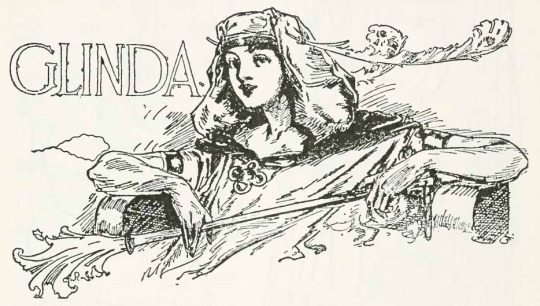
The Wizard has become Glinda’s enforcer, destroying people and hoarding the magic to a coterie of elites. He literally boasts about his powers of control: “You’re a stranger here, Miss Patches, and so you don’t know that nothing can be hidden from our powerful Ruler’s Magic Picture—nor from the watchful eyes of the humble Wizard of Oz” (228). And listen to what a bootlicker (and hammy carnival barker) he is: “I beg to announce that our Gracious Ruler has permitted me to obey the commands of the great Sorceress, Glinda the Good, whose humble Assistant I am proud to be” (336). The Wizard himself has been domesticated. No longer a morally ambiguous conman with a complex role, he is an allegedly pure good, totally honest cop.
Ozma bans magic, which in this fictional world is almost in the same league as banning fun. She runs a surveillance state that burns books. Also, if you are in Oz, you are incapable of leaving because of Glinda: the Wise Donkey states directly that he is stranded there, unable to return to his homeland Mo (93). Not only can people not escape Oz, but Glinda’s magic has erased the ability to even see the outside world. Instead of the Deadly Desert, Dorothy reports “in any direction, there is nothing to be seen at all” (269). Granted, the prison in the Emerald City is a lovely house, Ojo is the first person to stay in it, and Ozma pardons everyone with the same mercy she earlier showed Mombi, but this does not change the dystopian implications.
The Magic Picture, remember, allows Ozma and her cronies to survey anything anywhere in the world. Worse than the telescreens of Nineteen Eighty-Four, the painting, a whimsical way to keep in touch with Dorothy in Ozma of Oz, has instead turned Oz into an inescapable panopticon.
My issue is not that Oz has become this but that Baum is totally uncritical of these ideas—and, worse, allows them to dull down and simplify his world instead of bring out new qualities.
Who Is Dr. Pipt?!
The Patchwork Girl reintroduces some nuance to the Land of Oz, then, but Baum still reigns in characters to certain parameters. Yet in other ways The Patchwork Girl persists in the pattern that began in Dorothy and the Wizard in Oz of retroactively erasing nuance and moral grays where they previously existed (without re-editing the earlier novels, creating an incoherent mess). As my earlier comments highlight, Baum chooses to forget that he earlier depicts the Tin Woodman as perfectly willing to kill animals to save the lives of others. But the worst continuity issue is Dr. Pipt himself! (Puts on nerd glasses)
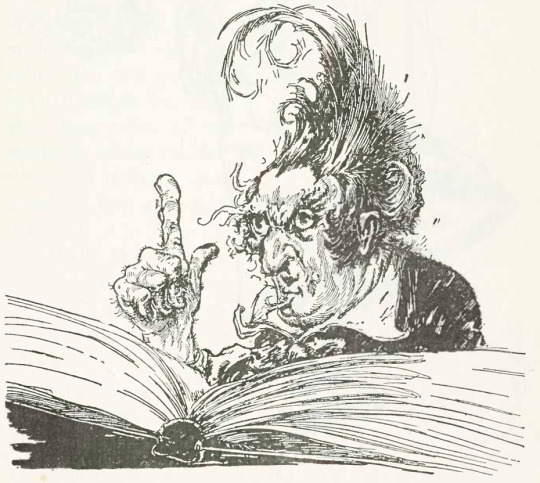
Above: Dr. Pipt reading from his magic book.
Ozma explicitly states that Dr. Pipt is the man from whom Mombi bought the Powder of Life in The Marvelous Land of Oz (220). In that earlier novel, the narration describes this interaction: “[Mombi] had met a crooked wizard who resided in a lonely cave in the mountains, and had traded several important secrets of magic with him” (16). In exchange, she attains magical powders and herbs. These products are comically branded like commercial goods under the name “Dr. Nikidik’s.” This implies the wizard’s name is Dr. Nikidik, not Dr. Pipt. As you can see below, Neill draws this character as a standard bearded wizard with a staff and pointed cap, physically not crooked at all.
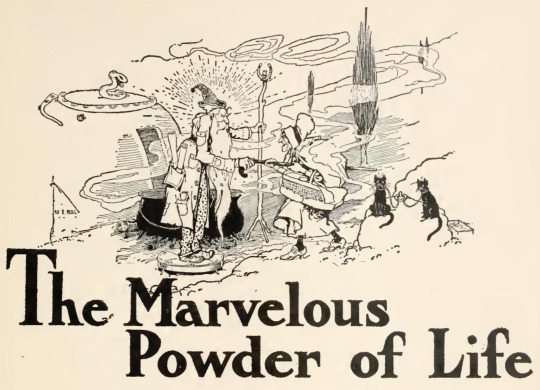
The implication is that the wizard is crooked in the sense of being sleazy or criminal. This is why Mombi tests the Powder of Life on what becomes Jack Pumpkinhead: she does not trust the wizard has given her a fair deal and wants to check. I love this idea that there are shady wizards around who will sell you seedy snake oil magic that may or may not work. However, Baum has rewritten Oz to be a land so flawless, whose people are so innately kind, that he cannot accept someone might be untrustworthy. So he reinterprets the obvious meaning of his words such that the wizard is physically crooked but wholly honest and, moreover, praising the laws that oppress him (!) and insisting he actually obeys them (!) because, dang it, he is an honest, good guy. This sanitizing is almost insulting to the reader. Granted, he illegally creates a magical entity to be his wife’s slave, so I shouldn’t overstate the extent that he is no longer a shady weirdo.
But this is not the only issue. In The Road to Oz, the Tin Woodman explains to the Shaggy Man that Mombi bought the Magic Powder from a “a crooked Sorcerer,” here unnamed, who inhabited Gillikan Country (177), not Munchkin Country, as in The Patchwork Girl. The detail about Mombi and the Powder of Life confirms he is referring to the “crooked wizard.” However, the Tin Woodman exposits that this man has since died. There is no reason for Baum to include this information at all, and yet he did and then he ignored it entirely to re-name and re-introduce the same character as the “crooked magician” Dr. Pipt present in The Patchwork Girl. By now, reiterating that this series is incoherent in both themes and literal continuity is passé. But these issues drain the verisimilitude of the setting (and usually make the world less interesting).
Baum also devotes a surprisingly large number of pages (and one whole chapter) to complaining about how much he hates music (both popular and classical) and calling music listeners “feeble-minded” and “ignorant” (137) before seemingly forgetting about the kindly living phonograph character, Vic. Everyone hates and abuses Vic for playing music. Even Scraps, who spends her time singing bad songs, begs Vic to stop and tries to run away. Baum calls ragtime, the most pleasant music that has ever existed, “a jerky jumble of sounds which proved so bewildering that after a moment Scraps stuffed her patchwork apron into the gold horn and cried: ‘Stop—stop!’” (89) Later the Shaggy Man, having failed to murder Vic himself, indicates Vic will soon be killed by angry Ozites (138) because everyone hates music because Oz is a nightmare world of people who will kill you for playing ragtime. Then the Shaggy Man sings a long, terrible song that everyone applauds. Baum seemingly forgets Vic and never mentions it ever again. What is going on aaahhhhh
Some Final Thoughts about Oz
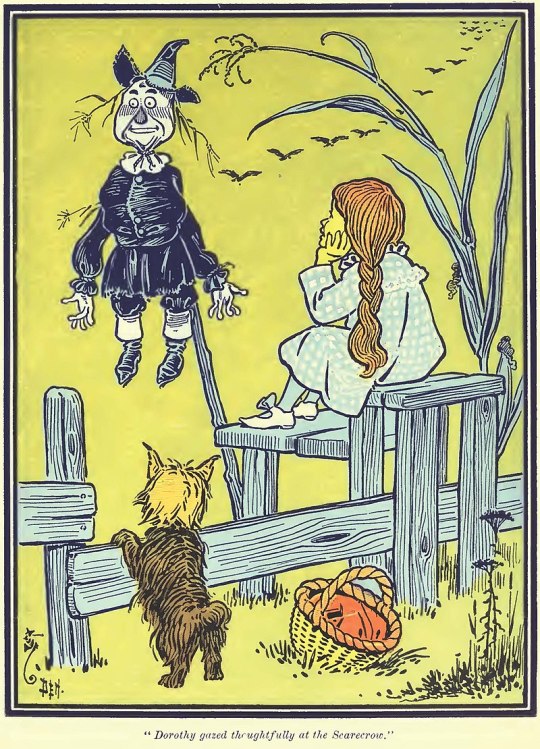
This is the last of my Oz posts, save that “Politics of Oz” if I finish it. I will give some last observations. As this series has shown, L. Frank Baum possessed a rare creativity but struggled with plotting, characterization, pacing, and continuity, in other words, with writing novels. Through the experience of discovering how insipid it could have been, I have gained a whole new appreciation for the craft and care of the original The Wonderful Wizard of Oz. It is a pity that Baum never recaptured the tight writing that makes Ozma of Oz so appealing or the satisfying and meaningful journey of The Wonderful Wizard.
In the original novel, Baum wrote that his objective was to create fairy tales for modern children “in which the wonderment and joy are retained and the heart-aches and nightmares are left out.” What this naïve perspective misses is that the wonderment and joy are only possible, in art, when there are heartaches and nightmares to compare them to. Pain and unpleasantness are part of life, and stories entirely without these traits are lifeless. Triumph only feels triumphant if the characters previously suffered heartache and nightmares. The return to Oz in Ozma of Oz feels so ecstatic because chapters and chapters of horror precede the rejoicing. The unpleasantness (save the racism, which is just a pity) is what renders The Patchwork Girl of Oz more interesting than the pastoral fluff of The Road to Oz and (most of) The Emerald City of Oz. As the Shaggy Man says, “[A] little misery, at times, makes one appreciate happiness more” (Patchwork Girl 136).

Baum knew this too. That mission statement of his was a lie—there is no way he wrote scary stories by accident, particularly the unrelenting horror in Ozma of Oz and Dorothy and the Wizard in Oz. Even the original novel contains nightmares and heartache, opening with Dorothy leading a life of hopeless poverty and then being separated from her home and family in a frightening weather phenomenon (that still scares me as an adult) that causes her to kill a slave-driving dictator in a freak accident in a world prowled by monsters. These darker aspects are an essential ingredient of the Oz series. The whimsical characters tend to be merry despite existing in their own little hells (the Tin Woodman’s dismemberment, the Wizard’s fraud imprisoning him to live in fear in his castle, the Hungry Tiger’s yearning to eat babies but conscience stopping him, and so on).
However, after the grizzly Dorothy and the Wizard in Oz, Baum seems to have tried to genuinely remove these darker elements from his stories. Increasingly his characters lose defining traits in service of being mindlessly happy and kind and (an idea of) funny all the time, though almost never kind enough for a moment to be touching. In fact, the characters are often judgy and mean but in a way Baum does not seem to recognize. Even, for instance, the Scarecrow’s alleged intelligence largely vanishes after the first novel so that he can spend the rest of the series as a blob of goofy character-shaped putty filling a spot in the roster.
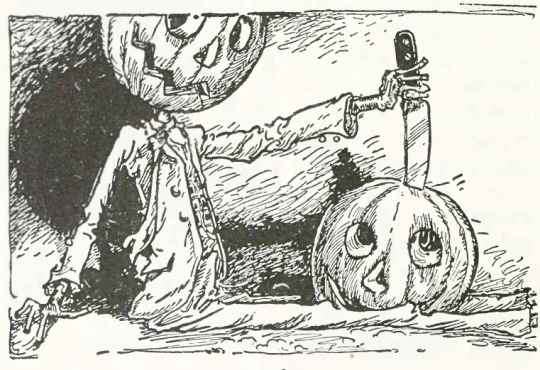
In my estimation, the Oz books are consumer products written primarily to make money and not out of artistic passion. This is not to say they are without craft or thought, just that this is not the core of the enterprise. The Oz series’ often careless plotting and structure and even more careless inconsistencies reflect this mercenary nature, the intention to use the books as disposable goods to spin off into plays, movies, comics, and any other way to turn a buck, and then be forgotten about. Perhaps the characters are shallow because the main role of each is to be a marketable name and design. That Baum, like a machine part, was immediately replaced with another writer who would pump out even more Oz novels than he did further suggests that the IP was a cash cow product first and any soulful artistic work second.
In addition, his other writing proves that Baum was definitely racist (I would mention the name of one of his nursery rhymes, but just the title might get me in trouble). If his notorious pro-genocide columns are taken as sincere (some claim they are satirical), then Baum was perhaps more racist than usual for his day. I feel comfortable showing the degree of support for these novels that I have only because the racism, in my estimation, is for the first time ever present in their text only in the seventh book and because Baum is long dead and thus unable to benefit from any way I could be perceived to promote his work. This is even more true when every book I have discussed is already free online. There are Oz fans and people with nostalgia for these books from their childhood, and I respect that. But I feel little admiration for these books.
Despite these misgivings and harsh criticisms, my emotions about the Oz series are mixed. The novels are often underwhelming, but even so or because of their flaws, I still find in them a peculiar magic. The wild inconsistency almost allows the reader to project their own canon chain of events and imagine their own characters, perhaps accounting for how many unique artistic works Oz has inspired. In particular, the horrors are wonderfully inventive. The illustrations are glimpses an alien dream world full of fun and wonder and nightmares.
The first strong point is the tremendous creativity. Baum invented so many unusual and memorable ideas and characters that he hardly developed one before hopping to another begging for elaboration. The second strength is that, certainly by the standard of the time, every main-series Oz book except for the second is feminist. The most capable and important characters are girls and women, and the stories show the perfect society as one where power is concentrated among women (Ozma, Glinda). Baum even takes the time to introduce the idea that some witches are good rather than wicked. This is likely the influence of Baum’s mother-in-law, the famous feminist and all-around social justice advocate Matilda Joselyn Gage. This seems unusual for the early twentieth century and fuels the series’ lasting appeal.
Also consider the portrayals of men such as the Tin Woodman, Cowardly Lion, Shaggy Man, etc. who are validated, loved, and valuable to others despite lacking customary forms of masculine strength and personality. Tin Woodman is a pacifist who frequently weeps, the Cowardly Lion is effeminate and also prone to crying, the Shaggy Man is gentle and nurturing and frequently sings, etc. The Wizard, while more martial (before Glinda makes him boring anyway), is physically unusual for a male hero, a defining trait being his tininess. The unexpected frequency of characters who read as queer, such as the apparently transgender Ozma, the considerable same-sex physical affection between her and Dorothy, or the Cowardly Lion wearing a girly bow, might also account for the attested popularity of Oz among queer people.
Yet of the Oz books that I have read, the only I would recommend just as good reading are The Wonderful Wizard of Oz and Ozma of Oz. The rambling pointlessness of Dorothy and the Wizard in Oz prevents me from suggesting it the way I would a more solid piece of work, but its story is such a cavalcade of darkness, with bears tearing the champion to shreds and emotionless plant people killing flesh beings in a living glass city, where even your sweet friend the Tiger will gore your horse and dear Ozma wants to kill your pet, I can’t say it’s boring. The Marvelous Land of Oz, though fun and memorably strange, is too sexist for me to really recommend and not for children who do not know how to contextualize that material. The Road to Oz is disposable. The Emerald City of Oz is also boring more often than fun or interesting. The Patchwork Girl of Oz falls firmly on the engaging side but leaves an unpleasant aftertaste.

L. Frank Baum invented children’s fantasy novels. For that, he has a long-reaching legacy. But far from delighting (and scaring) children today, the Oz books, unlike the 1939 musical, have become more an obscure historical curiosity than a popular series, at least here in the US. That might be for the best.
If I write it, “The Politics of Oz” will also appear on mackerelphones.com and, at least in part, here on my Tumblr. If you enjoyed this Patchwork Girl post, you can follow me on Tumblr or subscribe to my YouTube channel, where I might be adapting this little Oz series into videos so that my words can reach a larger audience. (And might be collaborating with someone else on an Ozzy project). Finally, if you think this or any of my other work is worth it, I would greatly appreciate a donation to my Ko-Fi.
Thank you so much for reading these Oz posts, if you have, and know that for doing this, I love you, at least a little bit. Also I would love you more if you gave me money at that Ko-Fi link above. Byyyeee 🥰
3 notes
·
View notes
Text
WE HAVE OUR CONTESTANTS!
LETS GET THIS PARTY STARTED!
bracket pending but our contestants are!:
Leonardo (rottmnt)
Leonardo (2003)
Leonardo (2012)
Sonic the hedgehog (sonic the hedgehog)
Hatsune Miku (vocaloid)
Rainbow dash (mlpfim)
Yugo(wakfu)
Gegege No Kitaro (Sakaiminato Town mascot(?))
Bloo (foster's home for imaginary friends)
Miyamoto Usagi (Usagi Yojimbo)
Yuichi Usagi (Samurai Rabbit: The Usagi Chronicles)
Breakdown (Transformers Prime
Arcee (Transformers Prime)
Blue (Blue's Clues)
Bluey (Bluey)
Jack Frost (rise of the guardians)
Megamind (Megamind)
The Flavor Blue Raspberry (Real Life
Naoto Shirogane (Persona 4)
Lance Mcclain (Voltron Legendary Defender)
Electric Blue Raspberry (CPU Kerfuffle)
P-03 (Inscryption)
Cure Princess (Pretty Cure)
Percival King (Epithet Erased)
Jay Walker (Ninjago)
R2-D2 (Star Wars)
Goo (Inanimate Insanity : object show)
The Woozy (Oz)
Ojo the (Unlucky (Oz)
Atul (Spiritfarer)
Mew Mint (tokyo mew mew)
Lapiz lazuli (steven universe)
1 note
·
View note
Quote
Ojo thought this over very carefully. "I had an idea," said he, "that prisoners were always treated harshly, to punish them."
"That would be dreadful!" cried Tollydiggle.
Ojo and Tollydiggle in The Patchwork Girl of Oz by L. Frank Baum
5 notes
·
View notes
Text
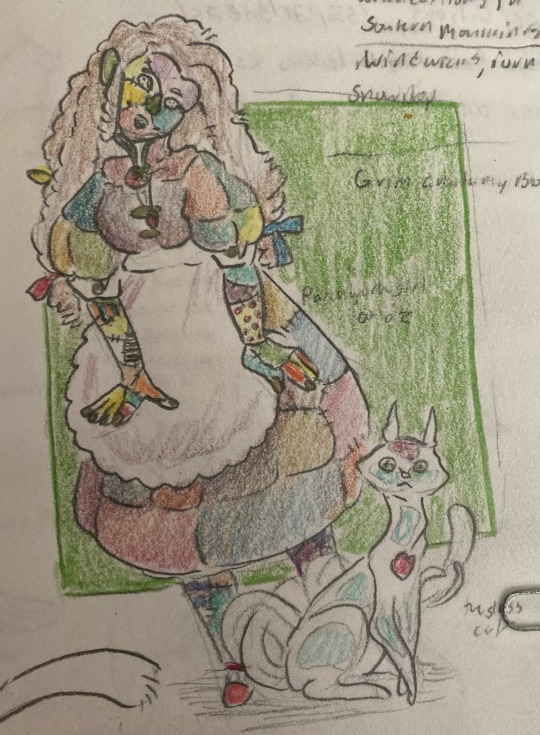
I did a drawing of the patchwork girl from OZ.
Man this book is kinda messed up. Like she was made with the intent of being a “servant”
Ozma is sort of authoritarian and we have a character question that (ojo the unlucky), and ozites are definitely very willing to shun others.
This might change at the end of the book as I’m only about halfway through.
So here is patches and the glass cat, who has pink brains, you can see them work!
I’m not entirely satisfied with the design but I do like it
10 notes
·
View notes
Text
Kisah Pak Agus
Hari Sabtu kemarin kami sekeluarga habis kondangan ke sepupu saya dari pihak umi. Satu hari kemarin bener-bener meninggalkan jejak buat saya. Dari perjalanan, tentang pernikahan, dan lain-lain. Saking banyaknya yang pengen saya ceritain, sampe bingung mau mulai darimana. Akhirnya saya mutusin buat mulai dari Kisah Pak Agus.
Pak Agus adalah teman Abi yang kami minta tolong buat nyetir mobil ke Purbalingga, tempat sepupu saya. Pak Agus ini orangnya santai, murah senyum, sampai-sampai keriput di samping matanya menandakan kalo blio sering tertawa. Saat kami berhenti buat makan malam di perjalanan pulang, Pak Agus bercerita tentang masa lalu, yang bikin saya semakin menyadari tentang kekuatan doa.
Dulu ketika blio masih bujang, orang tuanya adalah pengusaha ayam pedaging. hampir tiap makan lauknya pasti ayam, wkwk. Ayam pedaging milik mereka ini lumayan ngeri sih, menurutku. bayangin aja, dalam 37 hari beratnya udah 3 kg. Lhawong ayam biasa aja 37 hari masih piyik. Usaha mereka nih lumayan maju. Tapi suatu hari, Pak Agus sebagai seorang kakak yang punya beberpa adek nih ngerasa kalo orang tuanya terlalu keras ke dia. Dari sekian banyak saudaranya, cuma blio yang disuruh kerja keras buat peternakan ayam mereka. Dari ngasih makan, nyuntik ini itu dll. Kelewat sekali ajaa, udah kena damprat keras banget dari bapak ibunya. Dan perlakuan orang tuanya yang menurut blio terlalu keras ke Pak Agus, suatu hari setelah sholat tahajud blio berdoa,
“Ya Allah, kalau memang apa yang dilakuin bapak ibukku itu salah, tolong binasakan dunia mereka,” ngeri, cuy.
Esok harinya, ratusan ayam mereka mati tanpa sebab, pun hari-hari selanjutnya. Bahkan sampai beli anakan lagi sampai empat kali, jalan ceritanya selalu sama, mati. Hingga akhirnya ngga sanggup lagi buat memulai, usaha ayam ini bangkrut. Sebab doa anak mereka.
Tapi tepat esok hari pula, setelah Pak Agus berdoa, blio sakit parah. Sakit yang bahkan dokter pun tidak bisa mendiagnosis penyakitnya. Gejala yang beliau alami adalah : Lemah, jantung berdebar kencang, tidak kuat jalan, jalan beberapa langkah saja udh ndk sadarkan diri, makan juga ngga bisa, makan sedikit aja udh muntah-muntah. Berbagai RS udh dikunjungi, dari bagian ini ke itu, dokter satu ke yang lain, pun pengobatan alternatif udh dicoba, masih ndk ada perubahan. Bahkan kata dokter setelah pemeriksaan menyeluruh, kondisi blio itu normal semua alias sehat. Akhirnya sama dokter blio disuruh ke RSJ, karena bisa jadi aslinya sehat tapi “merasa” sakit selama ini.
Sebelum blio ke RSJ ini, orang tuanya pun bingung kudu gimana, akhirnya berpikiran,
“Dirabike wae lah, menowo mari,”
Yups, akhirnya Pak Agus menikah dengan seorang wanita tangguh disaat blio masih sakit. orang tuanya berpikir gini pasti karena sering nemuin cerita rangorang yang sebelum nikah sering sakit-sakitan trus hbis nikah sehat bugar. Tapi bahkan setelah menikah pun kondisi blio belum membaik. Akhirnya dibawalah ke RSJ. Bayangin, habis nikah perginya ke RSJ, istri blio hebat bangeet. Selama sepuluh hari di RSJ, istrinya nungguin. Sepuluh hari ini pula Pak Agus ngga sadarkan diri, dicuci otaknya. Sepuluh hari yang sia-sia karena nggada perubahan.
Di tahun ketiga blio sakit, setelah semua pengobatan diusahakan tapi ndk ada hasil, akhirnya blio cuma bisa berbaring dg badan yang makin kurus. Di tahun ketiga ini juga Pak Agus mulai istikhoroh. Sampai suatu hari blio denger suara, kalo disuruh minta maaf ke bapak-ibunya, berulang kali.
Awalnya Pak Agus ngga ngerasa ada salah yg besar ke orangtuanya. Sampai blio inget doa setelah tahajud yang blio ucapin tiga tahun lalu. Akhirnya Pak Agus minta maaf ke bapak-ibunya. Esok harinya blio sudah sehat walafiat :))
Setelah cerita, pak Agus bilang ke saya,
“Wes nduk, ojo kurangajar karo wong tuo, mboh bener opo salah, ngalaho wae.”
“Jane wong tuoku yo salah, tapi akune yo durhaka ndungo koyo ngono. Ojo nganti doa seng elek-elek marang wong tuo,”
“Dah, nduk, jangan kurangajar ke orang tua, entah mereka bener atau salah, ngalah aja. Sebenere orang tuak salah, tapi aku juga durhaka karena doa kayak gitu. Jangan sampe doa yang jelek-jelek buat orangtua”
Itu adalah kisah pertama yang beliau sampaikan sembari kami makan. Pak Agus makannya minta dibungkus karena asam uratnya kambuh gegara ngga sengaja makan ayam pedaging pas kondangan, salah satu efek dulu bertahun-tahun makan ayam pedaging yang banyak obatnya. tapi kata blio,
“Rejekiku makan ayam udah habis, soalnya dulu sepuluh tahun makan ayam terus,” wkwkw.
Kisah selanjutnya adalaaah, wuih udah panjang bener tapiya. Gapapa dah.
Suatu hari, salah satu anak blio yang masih bayi sakit DB yang lama-lama livernya bengkak. Unlucky, tiap diinfus, darahnya membeku. Hampir semua tempat dicoba untuk pasang infus, tapi nggada yang berhasil. Akhirnyamau dirujuk ke RS Kariadi, semarang. Tapi dokternya bilang,
“Pak. ini kondisinya ngga memungkinkan kalo sampe semarang. Saya ngga yakin bisa tahan,”
Jawab Pak Agus, “Saya lebih ridho kalo anak saya meninggal dalam kondisi ikhtiar daripada saat ngga ikhtiar,”
Selama di ambulan, Pak Agus berusaha supaya anaknya tetep nyusuin Uminya, entah gimana caranya. Sampai di Kariadi, dokter bilang kalo masih ada satu nadi yang hidup. Qadarullah infusnya bisa terpasang. Tapi selama berhari-hari di ICU, kondisi anak blio semakin kritis. Sampai suatu malam Pak Agus bilang ke istrinya,
“Malem ini kamu khatamin Al-Quran, aku tak iktikaf di masjid,”
Maka selama semalam mereka berdua merayu Sang Maha, supaya masi diberi kesempatan untuk terus merawat anak mereka. Esok harinya, Pak Agus mengusap perut bayi mereka yang membesar. Tahu apa yang terjadi? beberapa saat kemudian perutnya mengempis, livernya membaik. Bahkan dokter aja takjub. Ajaib, kata mereka.
Dua kisah ini bener-bener menggugah buat saya, betapa kekuatan doa itu luar biasa. Gusti Allah memang As Samii’, yang Maha Mendengar. Dan jawaban doa itu selalu iya, mengutip dari Novel Teman Imaji.
Iya, sekarang. Iya, nanti. Iya, tapi yang lain.
Jangan pernah berhenti buat melangitkan doa. Jangan pernah merasa doa-doamu tidak ada yang mendengar, sebab bisa jadi, keraguanlah yang bikin doa kita tertunda pengabulannya.
Teruslah berdoa, sebab kita ini bukan (si)apa-(si)-apa.
33 notes
·
View notes
Text
Oz book 7, the patchwork girl of Oz
Cut for spoilers but like this book came out in 1913 y'all so
I'm not even gonna talk about the obvs racism of the Tottenhots. Like big yikes. I mean I guess at the time he was trying to be inclusive because he does show a lot of different races and types of people and creatures in Oz but this one is oof. Like to the point I know they had to remove illustrations in later editions oof. Yeah.
I also can't get over that they just lobotomized the glass cat because it was too conceited and everyone was like "yes this is acceptable"
And I know Scraps like got to do as she pleases and live her life but I don't rly care for how Ozma considers some of her subjects to be possessions more than people. Like we stan a socialist queen but constructs are people too. At least in this universe.
This one felt super unsatisfying as a story, like you really want Ojo to complete his journey but the ending didn't rly do it for me. I would honestly have rather Ozma let the crooked magician make one last powder. I get that unlawful magic is banned but also she herself knows how useful the powder is. Like I would want some of that locked away somewhere just in case you need tu o make another Gump or Jack Pumpkinhead or whatever. And just being all "this journey was for nothing but we knew that the whole time so we're gonna let you have your uncle back" is like. I'd be SO MAD if I were Ojo! Like giving him the runaround didn't teach him anything, there was no lesson here. The 2 seconds everyone tried to be like "actually you're not unlucky!" was just extra unhelpful when they were theoretically the ones keeping his problems from being solved then. Like maybe he's not but y'all are not helping or getting through to him that way.
So yeah, I mean if the point of this book was to make me angry, then it worked I guess lol
2 notes
·
View notes